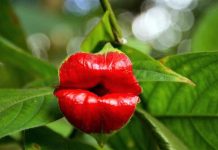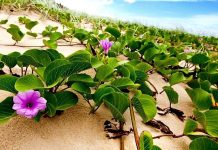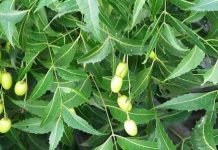Scientific name: Morinda angustifolia Roxb.
Family: Rubiaceae
Synonym: Morinda squarrosa Buch.-Ham.
Bengali/Vernacular name: Banamali, Bonsak, Baroful, Daru haridra, Harinar phul.
Tribal name: Koba bena (Chakma), Aasu (Tripura), Elingba (Mogh), Cheng rong (Garo), Krah-chermit (Khasia), Thachi (Marma).
English name: Thin-leaved morinda, Narrow-leaved Indian mulberry.
Description of the plant: An evergreen shrub, up to 6 m tall. Leaves 20-36 cm long, lanceolate, or oblanceolate, apex narrowly acuminate, base caudate-acuminate, glabrous. Flowers 5-merous, white, sweet-scented, heterostylous, arranged on globose heads which gradually elongates as a small compound fruit, hypanthium fused below. Fruits turbinate, few fruits set in each head, mostly free.

Plant parts used: Leaf, stem, root.
Ethnomedicinal uses: An extract is made with the leaves and stems of the plant are used for having hot bath once a day for three days to treat blisters.
A decoction is made with the roots of the plant is taken three times a day (50 ml amount each time) for three days to treat urinary tract infection.
Fresh juice extracted from the roots of the plant is taken thrice a day (two tea spoons amount each time) for seven days to treat irregular menstruation.
Pea-sized pills are made from the leaves of the plant are taken with honey thrice a day (one pill each time) for two weeks to treat tetanus.
An extract is prepared from the stems of the plant, after adding some sugar it is taken thrice a day (100 ml amount each time) until the jaundice is cured.
Fresh juice is extracted from the roots of the plant is taken twice a day (5 ml amount each time) for three days to treat fever.
Distribution: The species occurs less frequently in the greater districts of Sylhet, Noakhali, Chittagong, and the Chittagong Hill Tracts.
Is this plant misidentified? If yes, please tell us….
















… [Trackback]
[…] Find More Info here on that Topic: natureinfo.com.bd/morinda-angustifolia/ […]